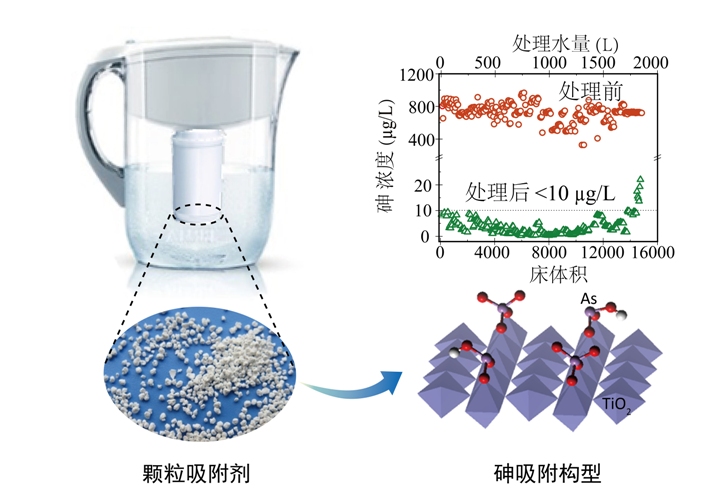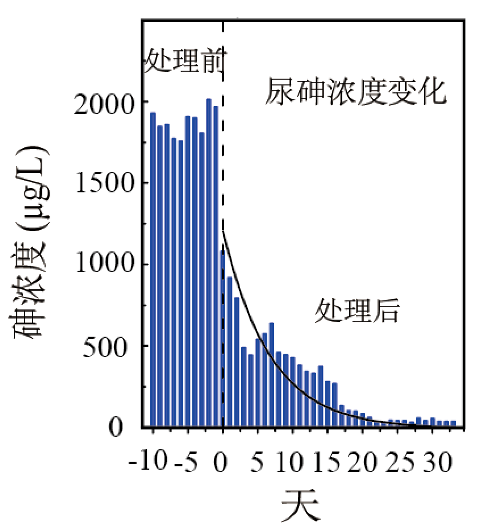|
|
Environmental Pollutants Micro-Interfacial Processes Group
| Group Leader: |
Jing Chuanyong |
Laboratory: |
State Key Laboratory of Environmental Chemistry and Ecotoxicology |
 |
|
|
|
Environmental Pollutants Micro-Interfacial Processes Group
Dr. Chuanyong Jing is a professor at Research Center for Eco-Environmental Sciences (RCEES), Chinese Academy of Sciences (CAS). He is Outstanding Young Scientist fund from the National Science Foundation of China (2014). He is also the chief scientist of the National Basic Research Program of China (973 project). He obtained his Ph.D at Stevens Institute of Technology in 2002 and continued his research as a postdoc and a research assistant professor there. He joined RCEES in 2008. He has published over 70 SCI indexed articles which cited over 1000 times by others.
Research interests: (1) Biogeochemical cycles on environmentally significant trace elements; (2) Environmental interfacial processes that affect the bioavailability of pollutants; (3) Environmental remediation with nanotechnology.
Contact: E-mail: cyjing@rcees.ac.cn; Tel: 010-62849523; Fax: 010-62849523
Groundwater Arsenic Analysis and Removal using Novel Nanomaterials
Arsenic (As) exposure threatens human health. Accurate field As speciation analysis and its effective removal are of great importance. With the explosive development of nanofabrication, we synthesized Fe3O4@Ag magnetic SERS substrate as both an active As accumulator and a strong surface Raman enhancer. With a detection limit of 10 mg/L and a linear SERS response for As concentrations up to 1,000 mg/L, this in situ SERS platform allows easy and reliable detection and identification of As species in multiple matrices. As removal from water is achieved using nano-TiO2 based adsorbent. Due to its high affinity to TiO2, As was reduced to lower than 10 μg/L from 300-800 μg/L in raw water, satisfied the requirement of the drinking water standard. The total urinary As concentration from volunteers of local residences, ranging from 970 to 2,080 μg/L before groundwater treatment, decreased to the range 32-73 μg/L in 15-33 days.
 
Group Leader:Prof. Chuanyong Jing

Member
|
Ruiqiang Yang
|
Professor
|
|
Jingjing Du
|
Assistant Professor
|
|
Wei Yan
|
Assistant Professor
|
|
Liying Wang
|
Assistant Professor
|
|
Student
|
Degree
|
Year
|
|
Li Yan
|
Ph.D
|
2012
|
|
Xiaochen Li
|
Ph.D
|
2015
|
|
Wenjing Liu
|
Ph.D
|
2015
|
|
Li Ye
|
Ph.D
|
2014
|
|
Shaoyu Lu
|
Ph.D
|
2016
|
|
Shixin Qiu
|
Master
|
2014
|
Representative Publications:
1. Hu, S.; Shi, Q.; Jing, C.* Groundwater arsenic adsorption on granular TiO2: Integrating atomic structure, filtration, and health impact. Environmental Science & Technology 2015, 49, 9707-9713.
2. Du, J.; Cui, J.; Jing, C.* Rapid in-situ identification of arsenic species using a portable Fe3O4@Ag SERS sensor. Chemical Communication 2014, 50, 347-349.
3. Cui J.; Shi J.; Jiang G.; Jing C.* Arsenic levels and speciation from ingestion exposures to biomarkers in Shanxi, China: Implications for human health. Environmental Science & Technology 2013, 47, 5419–5424.
|
|
|
|
|